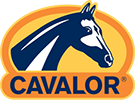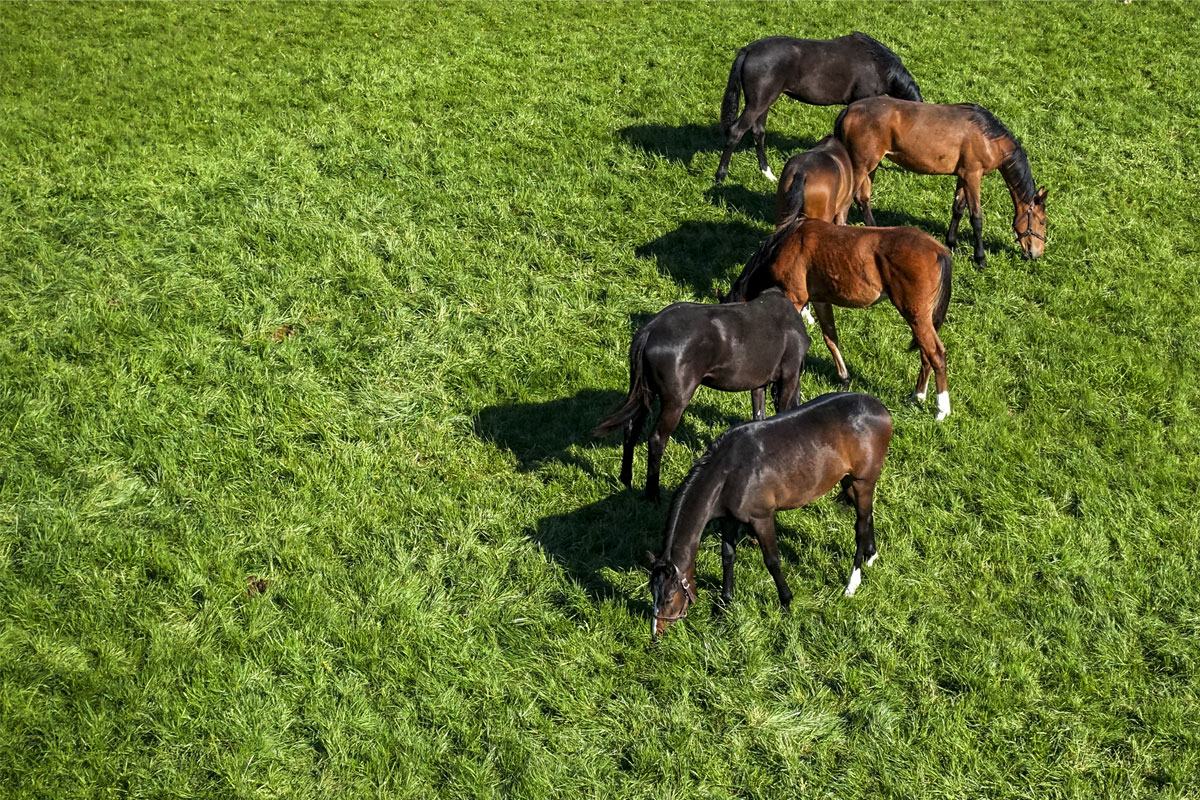Gastric ulcers don’t just occur in top sport horses; leisure horses and even foals can get them too. Actually, we can say that 60-90% of horses suffer from gastric ulcers. But with good management, a lot can be done to prevent and, if necessary, treat them. In this article we discuss equine gastric ulcers.
What is a gastric ulcer and what causes it?
Gastric ulcers are small painful wounds on the stomach wall. They are only visible during a gastroscopy, but their presence is often announced by your horse’s behaviour. Research shows that ulcer severity is not necessarily linked to severity of symptoms – this varies from horse to horse.
The lower part of the stomach produces gastric acid constantly – necessary for horses in the wild, as they graze all day. However, for stabled horses that only get 2 or 3 meals a day, it can be problematic. The production of gastric acid in an otherwise empty stomach can cause problems. Without enough fibre in the stomach, or during hard work on an empty stomach, the gastric acid can start to irritate the sensitive stomach wall and cause ulcers. The symptoms of gastric ulcers can often be vague – loss of appetite, girthiness, more frequent yawning or teeth grinding, or colicky behaviour. Untreated, they can eventually lead to a drop in performance, weight loss, and other digestive problems.
How do you recognise an ulcer?
Although a gastric ulcer cannot be seen from the outside without gastroscopy, a horse often gives signals. One horse may show it more clearly than another, and not every horse will show all the signs.
Horses can’t talk, of course, but if you observe them daily and interact with them regularly, you get to know their normal behaviours and habits. This means that you’ll notice right away when something is wrong, and can take steps before the problem gets worse. Does the unusual behaviour start at a certain moment? Then the horse is telling you something. The following symptoms may be signs that your horse is suffering from stomach ulcers:
- Reduced appetite
- Pain during girthing or when the belly is touched
- Stretching as if to urinate
- Difficult behaviours during riding
- Drop in performance
- Dull coat
- Grinding teeth or yawning
- Weight loss
- Behaviours associated with colic
If these symptoms persist, contact your vet for a diagnosis and a treatment plan, if needed.
Correct diagnosis is key! Note that a gastric ulcer can only be diagnosed by means of a gastroscopy. Bloodwork, faecal samples, or saliva tests will not yield accurate diagnoses. A gastroscopy is also important to see where the lesions are located in the stomach. Indeed, the ulcer’s location determines which treatment would be the best.
Gastric ulcers from mental stress
Horses are creatures of habit, and they require a consistent daily routine for their mental well-being. Change (change of yard, herd mates, owner, frequent transport to unfamiliar locations, etc.) can cause mental stress. Being flight animals, horses have extremely sensitive nervous systems. The brain and the digestive system are also closely connected. For example, a horse under acute stress will quickly produce loose droppings.
Mental stress quickly triggers the nervous system and causes the release of stress hormones. Cortisol acts on these nerve pathways, stimulating gastric acid production but also affecting the integrity of the protective layers of the stomach. As long as the stress is temporary, it usually is not a problem. However, if the horse suffers from tension or stress for an extended period of time, it can develop stomach ulcers.
What can you do about an ulcer?
A stomach ulcer will require a visit from your veterinary surgeon. Vets often recommend omeprazole, a medication that stops the production of gastric acid, giving the stomach time to heal. Omeprazole has certainly proved its worth in the short term. It is the only FDA-approved drug with scientific efficacy in curing gastric ulcers.
With regard to prevention, however, sensible nutrition management is much more beneficial than long-term use of omeprazole. The stomach needs acid for proper digestion. Completely stopping the production of acid does not help digestion. Moreover, the sudden discontinuation of omeprazole may lead to a significant increase in gastric acid production. Make sure your horse’s ration contains sufficient roughage and don’t feed him too much sugar and starch. The more the horse has to chew, the more saliva is produced. Stomach ulcers can be prevented with buffers that only neutralise excess gastric acid production.
Here’s a movie we made about gastric ulcers:
The importance of forage
Forage is the largest component of a horse’s daily ration. Research shows that the type of forage matters. The most important factor is that forage provides structure. This creates a thick, strong fibre layer in the stomach, forming a natural barrier against splashing stomach acid. Furthermore, the more textured the fibre, the more the horse will chew and salivate.
Straw
Straw increases the risk of developing gastric ulcers. Straw makes a nice extra to nibble on throughout the day, but your horse’s feed ration should never be 100% straw.
Lucerne
Lucerne’s higher calcium and protein content results in a buffering effect, making it useful as a feed for horses prone to gastric ulcers. A word of caution, however: lucerne is richer than grass hay and is not suitable for all horses (easy doers, for example). Choose lucerne hay, rather than pellets or cubes, because hay has more structure. Sometimes lucerne hay can be cut very young and contain mostly leaves instead of stems. In this case, choose more textured grass hay or a mix of both so that your horse’s ration has enough structure.
Grass hay
Grass hay often has more structure (and thus fibre) than lucerne. This makes grass hay the most suitable source of roughage.
Beet pulp
Research shows that beet pulp can lower the risk of gastric ulcers. It is a useful source of roughage that also provides energy. It is high in fibre; however it needs to be soaked before being fed to the horse.
Want to read more about roughage and forage? You’ll find it here in this issue of Valor.
Advice from our experts: fibre plays a key role in prevention and treatment, with supplements in a strong supporting role
Prevention is better than a cure, so provide a healthy stomach environment and you will avoid many problems. In this Science Sunday, you have already read about the importance of fibre. But did you know that supplements (and even Cavalor concentrates) can be quite helpful in preventing gastric ulcers? Supplements can have a buffering effect. Give these to your horse shortly before the big event, training, or transport.
What about preventive administration? Here too, timing is key, because their buffering effect will often be shorter than that of fibre. Give your horse supplements early in the morning (when the pH level is naturally lower) and ideally before feeding him concentrates. Horses eat less at night and so administering the supplement late in the evening can also help.
We developed Gastro Aid especially for the equine stomach. It is available as a paste, powder or liquid.
Cavalor Gastro Aid creates a healthy environment in the stomach by neutralising gastric acid and protecting the stomach wall. A horse’s stomach produces acid continuously, making it very susceptible to developing wounds or sores. This paste was developed for horses suffering from stomach ulcers and loss of appetite. Once the horse has recovered and is eating better, you can switch from the paste to the powder or liquid version.
The liquid and powder versions can also be used as daily preventive measures for horses prone to stomach ulcers. Unlike omeprazole, it does not shut down stomach acid production, but works to protect the stomach from acid damage.
The herbs in Cavalor Gastro Aid help to protect the stomach wall against excess acid. They provide extra support for the stomach by stimulating saliva production and promoting the healing of ulcers.
Whilst concentrates are often seen as ‘risky’ when talking about gastric ulcers, Cavalor Fiberforce Gastro actually helps in their prevention and treatment.
Cavalor FiberForce Gastro is a high-fibre mix for healthy stomach function. Its high-fibre composition includes a mix of lucerne and teff grains, beet pulp, and 8% timothy stalks, ideal for stimulating saliva production and neutralising stomach acid. This combination of herbs protects the stomach lining against irritation and helps to maintain a neutral pH value in the stomach.
Cavalor Fiberforce Gastro is low in starch and sugar to keep glucose and insulin levels in balance. FibreForce Gastro is ideal for horses with stomach problems. It also contains tasty fenugreek to stimulate the appetite. Its extruded cereals ensure good digestion – no whole grains.


